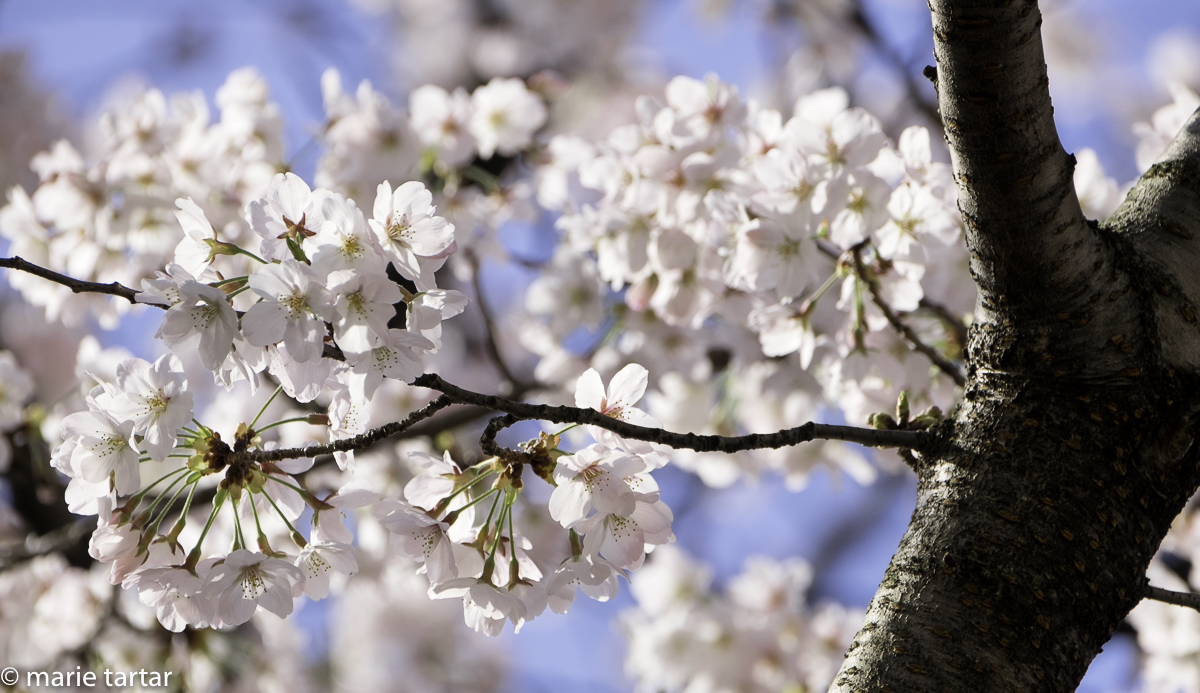
Monday, April 4, 2016
After an overnight recovery stay in Tokyo, we were on to Kyoto, hoping our timing for cherry blossoms was on. Was it ever! In October 2014, we fell in love with Kyoto, a very livable and walkable, temple and garden-filled City of Ten Thousands Shrines, ringed by hills. We had stayed in a converted machiya (machi-town; ya-shop), a mainstay of Japanese vernacular merchant architecture. We had absolutely loved the river-side location of our machiya apartment, a property of Aoi Kyoto Stay, on tree-lined and lantern-lit Kiyamachi-dori street.

Panorama of the Kyoto street that we love, Kiyamachi-dori; to the left of the footbridge is the apartment we stayed in last trip; to the right of the large kanji sign is a restaurant we tried this time, Negiya, featuring mountain vegetables, namely leeks (negi)
It was obvious the street’s ambiance would only be enhanced by coming in spring, when the trees would burst into a riot of pink blossoms. This time, we opted to book a larger property on the same street, just a few doors down, Takasegawa. In the meantime, Aoi Kyoto Stay has opened a small hotel by the same name on the same street, which meant we had easier access to concierge services.
Following our tradition (established during our last stay in Kyoto), we immediately headed out for okinomiyaki in nearby Gion, just across the Kawo-gama river. Of course, we went armed with a tripod and by way of Shimbashi street.

Shimbashi, in Gion, lit for night-time enjoyment of the sakura blooms. The apparent absence of crowds is, of course, an illusion.
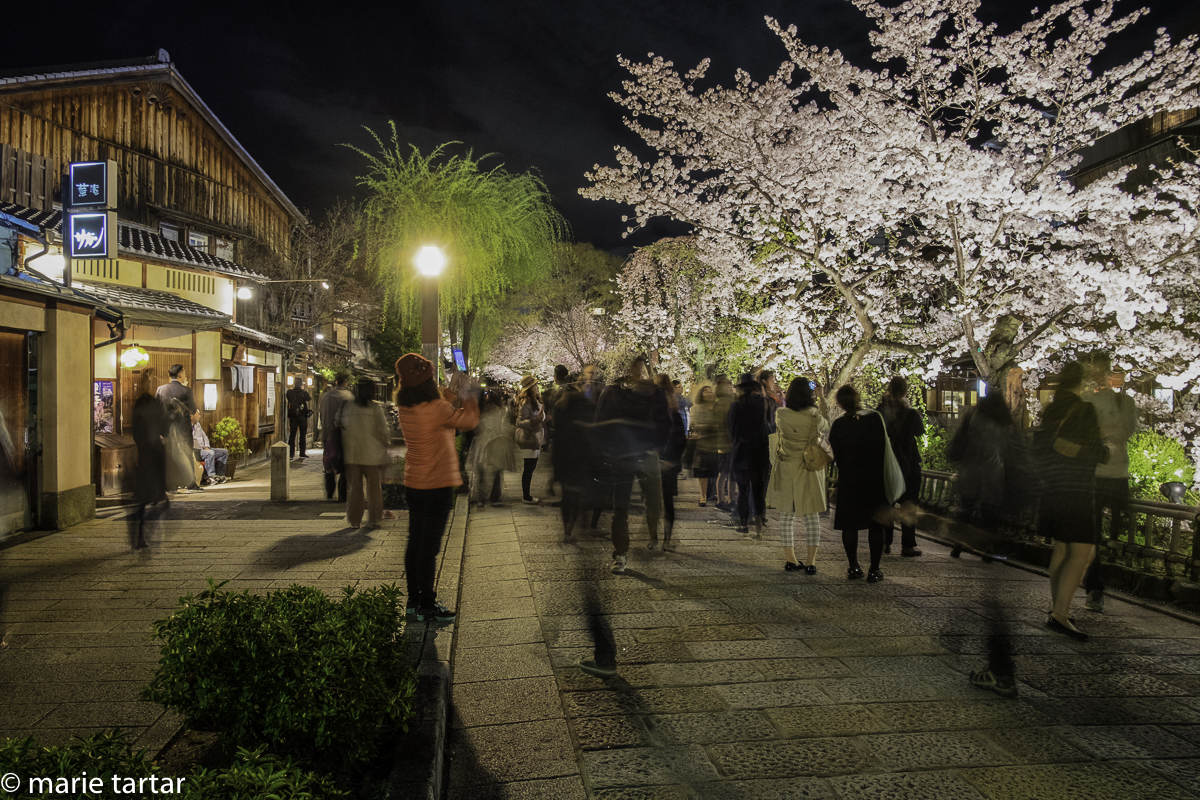
Of course, we had plenty of company on Shimbashi street in Gion, Kyoto, with whom to enjoy “night time illumination” of sakura
We found the Gion Shirakawa area (between Hanami-koji and Kawabata-dori) filled with crowds out enjoying the lit-for-the-season cherry blossoms. I later learned this was the last night of the “night time illumination” of Shimbashi. We were to luck out repeatedly on this trip with our timing.
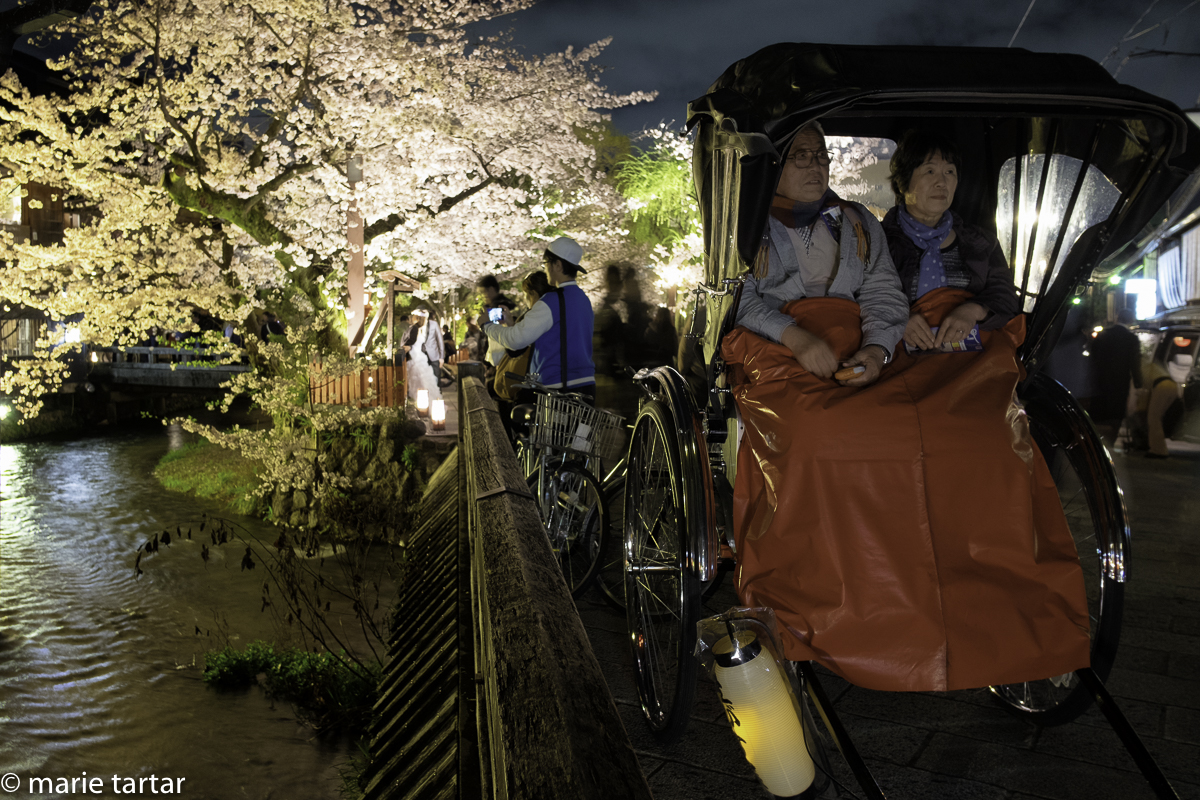
Shimbashi, lit at night, for hanami (cherry blossom viewing), with a couple tucked in for a rickshaw drive
We eventually hungered enough to actually go to the Issen Yoshoku restaurant, where were seated at a 4-top, which was also occupied by a half-Scottish, half-Belgium couple on a 3 month trip around the world. We had to chuckle as he described asking to see the menu and being shown a laminated brochure which, flipped open, showed just one item, the Issen okinomiyaki for 680 Y with everything. “Everything” means “Spring Onion, Beef, Ginger, Dried Shrimp, Tempura Batter, Grilled Fish Paste, Konjak Jelly, and Dried Bonito.” It is delicious, like an omelet without egg. The name derives from “what you want” and yaki, “cooked or grilled”. In many places, one can customize the contents and even do the cooking at a table-top hibachi, but at Issen Yoshoku, they evidently feel theirs is the definitive version, which is hard to dispute.

Issen Yoshoku okinomiyaki, with everything, the definitive version? I’ll have to do more tasting to be sure….

Recapitulating our first night’s circuit of our prior stay, we strolled atmospheric Ponto-cho street, another historic geiko quarter, lined with bars and restaurants, before returning home
Tuesday, April 5, 2016
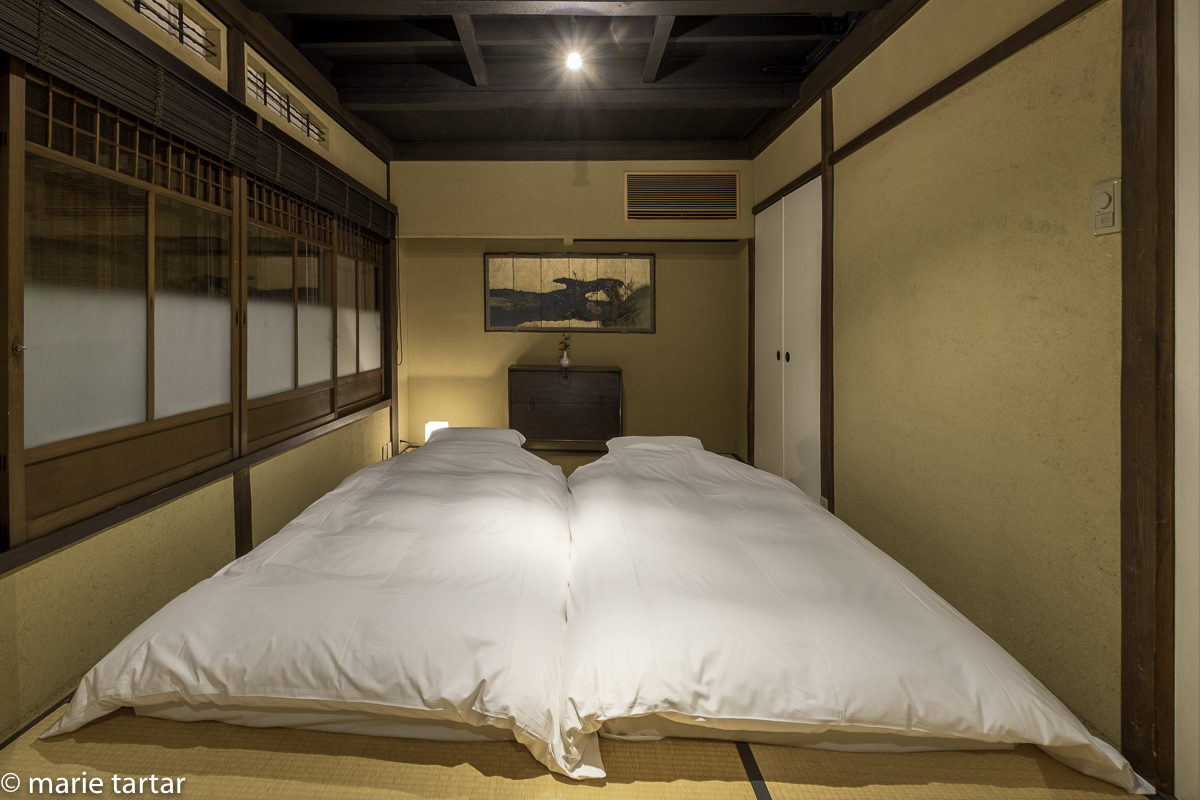
I had to wait until after housekeeping came to photograph our upstairs tatami bedroom: neither Steve nor I could get the futon bedding smooth enough to shoot!
We had a great recovery sleep of the dead in our upstairs tatami room bedroom. The next morning, I mistook the conditioner for lotion and smeared it all over my arms, but the hairs on my arms have never been smoother. A Buddhist vegetarian breakfast was delivered by a little man in a truck, a series of lacquered dishes with beautiful morsels. My favorite was the last bite-a tempura plum!
We headed north on foot on Kiyamachi-dori, following the cherry blossom trail to the Teramachi covered market.
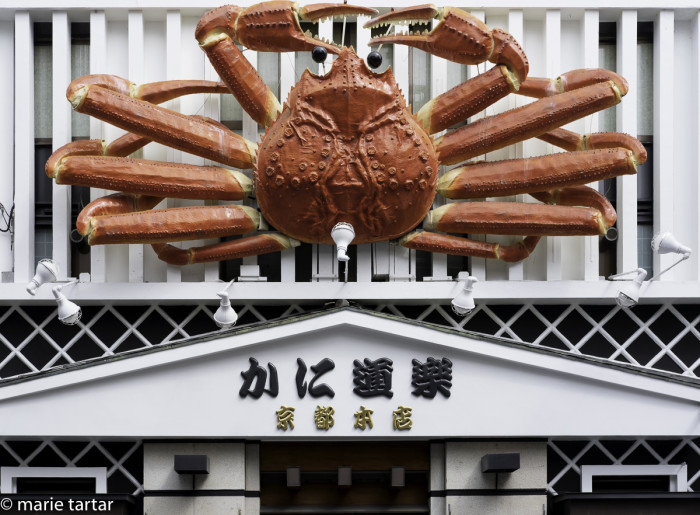
Little doubt the specialty of this restaurant, near Nishiki Market in Kyoto! This was not the biggest crab on a building we were to see on this trip
Along the way, we found some petite souvenirs, from a shop selling only gold leafed products and another selling inks and chops. Our destination was the Kyoto Imperial Palace Park, our first time there, with the aim being to submit applications for visiting Katsura Imperial Villa. The first available time was 9 am on Friday, our day of departure, 3 days hence. In the park, Japanese families were out in force, with hanami picnics under the flowering trees, children racing around and everyone enjoying themselves.
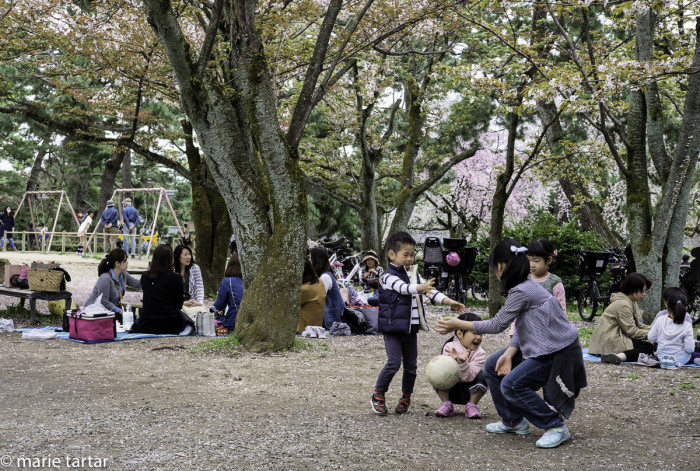
Cherry blossom season brings the Japanese out of doors for hanami (flower viewing) parties and picnics, here at the Imperial Palace Park in Kyoto
Passing through Teramachi market, we spied a familiar and beloved name, Breizh Cafe, well known to us from Paris. Steve liked it better in Kyoto than Paris. I enjoyed the Breton fish soup and a petite salade, while Steve ordered the seasonal galette, with white asparagus, fromage, egg, and prosciutto. We shared a desert crepe with Valhrona chocolate, pear and candied almonds. The Paris cafe specializes in artisanal ciders, which I learned to love there, and the Kyoto outpost had an offering we had to try: a cider from Kyoto. It was delicious, although not cheap, doubling our bill at 3000 Yen (about $30 for a carafe).
After relaxing an hour back at the apartment, admiring the cherry blossoms swaying outside the glass and listening to the bubbling of the canal below us, we mobilized for night-time hanami at Kiyomizu-dera Temple (Spring Special Night Time Opening). Even walking there, the Kamo-gawa River was a riot of blossoms, selfies, and people out enjoying the balmy weather, sun and color.
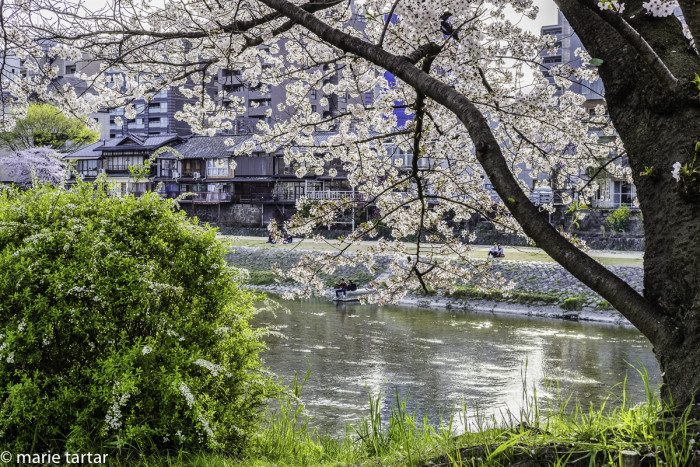
Couples relax along the Kamo-gawa River, a major north-south artery of Kyoto, enjoying the spring blossom show
Not surprisingly, even though it was a Tuesday night, we had plenty of company, many dressed in butterfly colorful kimonos.
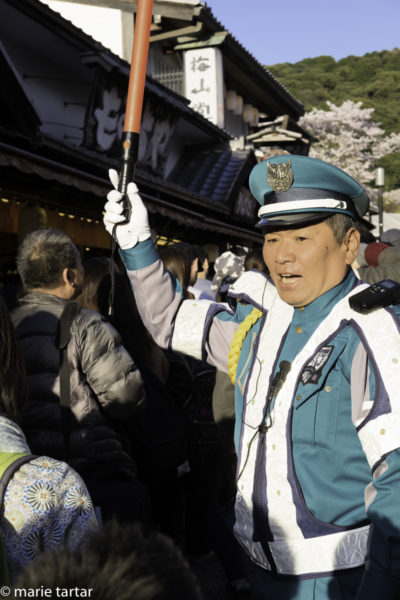
This official tried to keep the crowd in order queuing up for Spring Special Night Time Opening at Kiyomizu-dera temple
The throng was generally well behaved, in a festive mood. The huge wooden Buddhist temple and UNESCO World Heritage Site, on an elevated and wooded site overlooking Kyoto basin, is always spectacular, but was exceptionally resplendent dressed up with blossoming cherry trees and “night time illumination”. The name means clear or pure water (mizu=water) which refers to a waterfall on the site.

Crowds of mostly Japanese tourists were as enthralled by the spectacle of the lit-up cherry blossoms against the darkening sky, magnified in a reflecting pool, as we were.
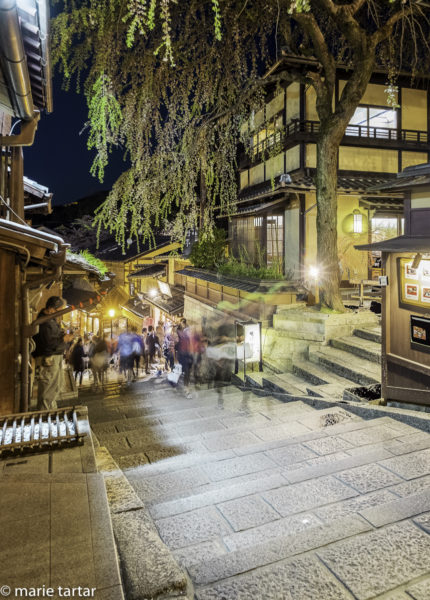
Down the hill and a little north of Kiyomizu-dera Temple is a warren of charmingly restored streets, with traditional wooden houses converted to shops and restaurants lining the stone streets. The major streets are Ninen-zaka (literally 2 year hill) and Sannen-zaka (3 year hill), named for the years of the early Imperial era in which they were laid out. There is a plethora of nice souvenir shops, as well as sweet shops, many passing out samples.

Freshly made snacks, hot off the griddle, delicious! They are a cross between a cookie and a cracker, both slightly sweet and slightly savory, with beans or wasabi peas pressed into the batter.
Dinner was at neighborhood favorite, Kiln, down the street, where we stayed during our last trip. I loved the house made ginger ale. We shared a “taco” salad (spiced meat on miniature heads of lettuce), rockfish with lemon and caper sauce, grilled vegetables with seasoned salts and papparedelle with a savory beef sauce.
Wednesday, April 4, 2016
Thanks to jetlag, I was up early, 6 am.
We joined hoards of mostly Japanese tourists, taking advantage of the first day of the 5 day spring opening of the Kyoto Imperial Palace (Gosho).

Special spring opening of the Kyoto Imperial Palace-no advance application required, but lots of mostly Japanese company
Except for these days in spring and a similar period in fall, advance reservations are required to visit, which is why we had never been there, despite this being our 4th time through Kyoto. As always, the garden was the best part:
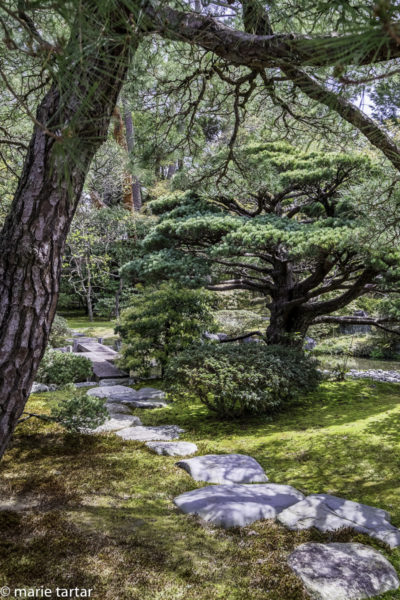
Up to this point, with the exception of the Imperial Palace visit, it had seemed to me that we were recapitulating our prior stay in Kyoto, down to eating in all of the same restaurants. Not that there is anything wrong with revisiting favorites from a prior stay, but I was feeling a little unimaginative. So, I was happy to finally find ourselves lunching at new-to-us Ippudo, a Lonely Planet recommendation for sizzling delicious gyoza and piping hot and flavorful ramen. Just two spots were open at a communal bar in the narrow space, just down the street from Nishiki Market, from which we picked up snacks on our walk back home.
Steve took the goods home, while I spent an hour in Takashimaya with the same salesgirl who helped me 2 years ago in the Issey Miyake Me department.
Arriving back at the apartment, I found a message from Satoshi-san, saying the chef’s wife had died and so Gion Rakuraku, his kaiseki restaurant at which we were planning to dine that evening, would be closed. We met him in front of the theater to pick up the tickets (4800 Yen) for Miyako Odori, the annual spring geisha dance performance. We arrived before the performance for the tea ceremony, which was the oddest, assembly line version of this ritual I have ever experienced. The first row of participants were the only beneficiaries of directly interacting with the beautifully made up, coifed and attired geiko doing the demonstration in front, while everyone else, including us in the second row, had a more truncated, hurry up, eat your sweet and drink your tea version, to make way for waves of others to follow. The irony of this is extreme: the whole point of the tea ceremony is ritual, from the choreographed, economical and graceful movements to pausing to admire the beauty of the tea vessel and implements.
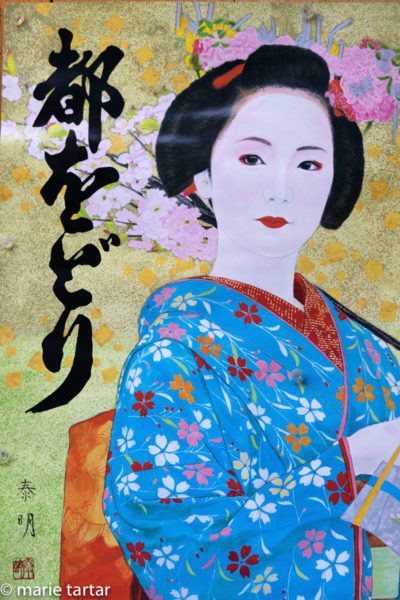
Poster for the annual, spring-time Miyako Odori geisha dance performance, a spectacular event, not to be missed
The Miyako Odori performance itself was truly spectacular, with dazzling costumes, 7 dances with seasonal themes, starting and ending in spring. Photography is not allowed, so the poster plastering Gion advertising the performances will have to suffice. The in-your-ear English language commentary was worthwhile, supplying story lines and interesting historical and background information, timed to accompany the performance.
From Miyako Odori, we headed east, with our destination being Shoren-in Temple for their night time illumination. We found ourselves in boisterous Maruyama Koen (Park), where a carnival atmosphere reigned, with happy hanami partygoers at picnic tables, vendors, shouts of “kampai” (cheers!).
Arriving eventually at Shoren-in, it was dark and closed, so we were at a loss. It turns out their night time illumination was only April 1-3, so we couldn’t have made it anyway, even if I had correctly read the entry.
What to do? We were on Shijo-dori, where the east-west Tozai subway line runs, in line with Nijo-jo Castle, which we had once visited with Mama in the early 1990s, and which also had night time illumination, 4 stops away.
Alighting at Nijo-jo-mae (in front of Nijo-jo) station, the brightly illuminated white castle across the street stood out against the darkened sky.
There were buses in the parking lot, and a healthy size but well behaved crowd, but the expansive spaces swallowed them up readily.

The Kyoto samurai castle, Nijo-jo, became more like a fairy-tale castle, lit up with washes of color for spring night-time viewing
It was quite magical, with the sakura lit like fairy blossoms, as well as the castle moats and garden rocks lit with a play of color.
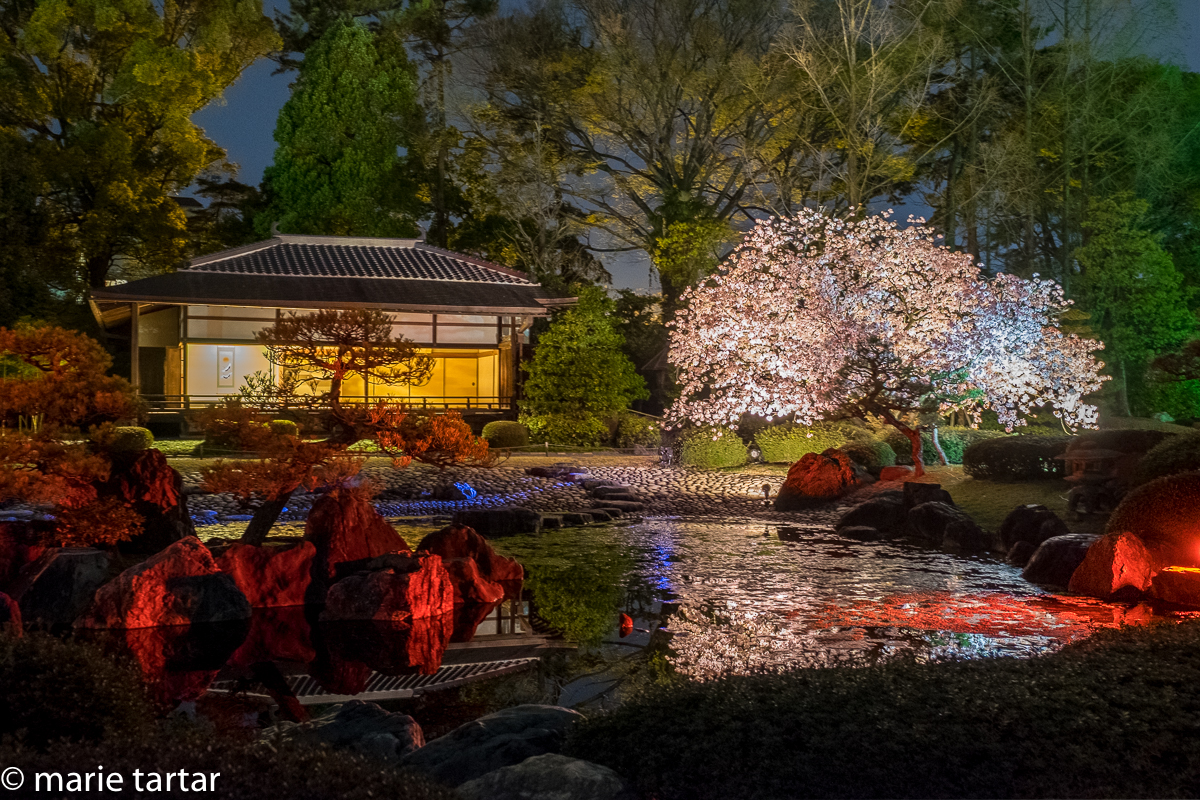
Garden at Nijo-jo castle in Kyoto, with a psychedelic night light show to highlight the sakura bloom
When we finally had our fill of the blossoms and the light effects, we headed home by subway, back on the same line. Alighting from the subway, we had an transient episode of alien abduction. We were intent on dining at perennial favorite Omen, but could not find it. I knew it was west of the bridge over the Kamo-gawa, but Steve thought maybe I remembered wrong.
“Humor me,” as he rushed over the bridge to the other side, where it also wasn’t. We were stumped!
What happened to Omen? (The name means, essentially, Honorable noodle, the “O” being an honorific; it should be called Oh man, it is that good.) Being one of the most popular restaurants in Kyoto, it couldn’t have closed. The problem finally dawned on me as we sadly started to head south toward the apartment to regroup. The subway let us off on Sanjo-dori (3rd Street), but we thought we were on Shijo-dori (4th Street), where the restaurant is. The immediate environs resemble each other, both resplendent with cherry blossoms along Kiyamachi-dori and one block off the Kamo-gawa. By the time we figured out the confusion and rushed down one long block to Shijo-dori, it was 9:30 pm, and the restaurant was closing.
This is how we finally came to try a neighborhood restaurant, Negiya, an izakaya specializing in dishes with mountain vegetables and leeks. We had liked the look of this restaurant on our prior stay , steps across the footbridge from our machiya , and liked the welcoming wooden bowls of vegetables and impossibly long bunches of leeks at the door, but had been discouraged by the all Japanese character cards outside (we didn’t even know its name) and had run out of time. This time, our way was paved by an advance call by the Aoi Kyoto Stay front desk. Next time, I won’t be so hesitant!
Enough of cherry blossoms! For the last segment of our stay in Kyoto, we ventured further afield, to Sagawa Art Museum and Katsura Imperial Villa, destinations involving trains, buses and taxis-details in our next post!
-Marie
If this post makes you want to see more of Kyoto’s treasures, here’s a link to a prior trip:


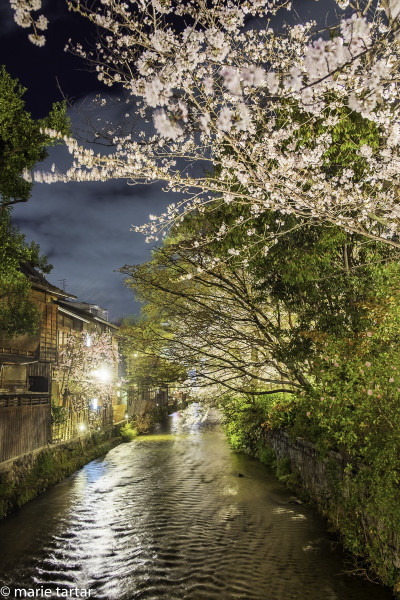
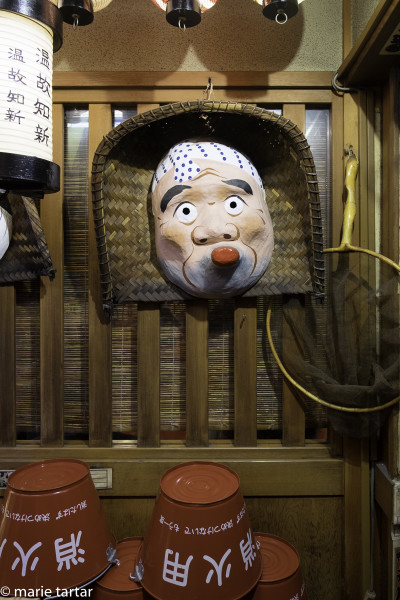
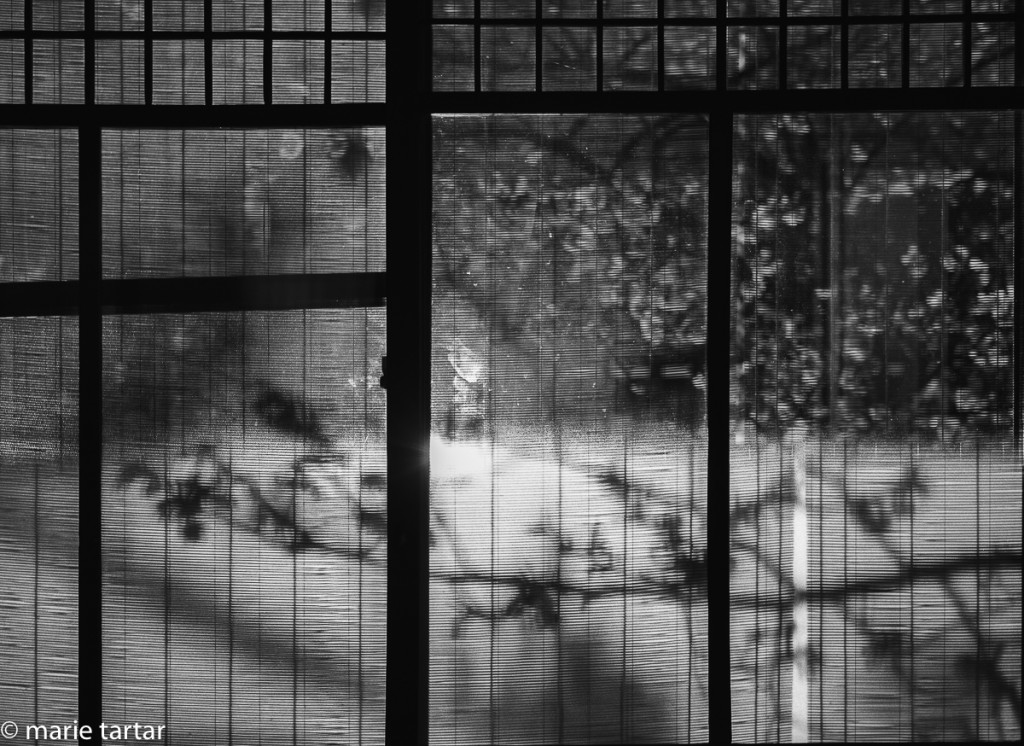
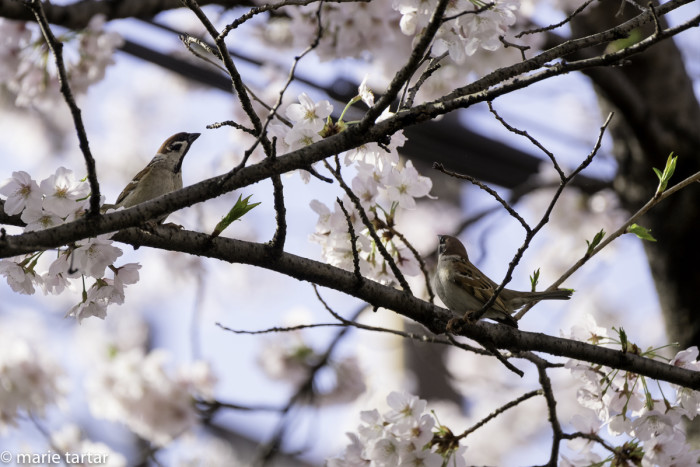
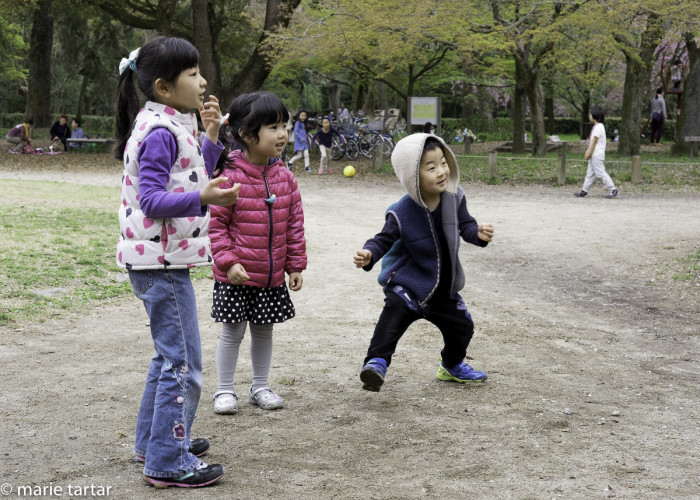
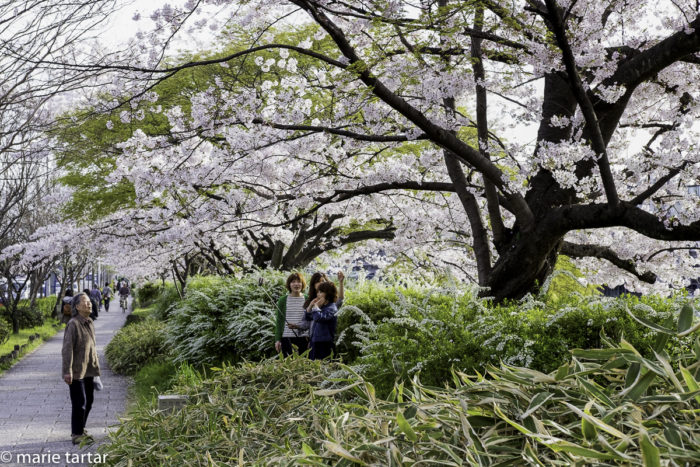


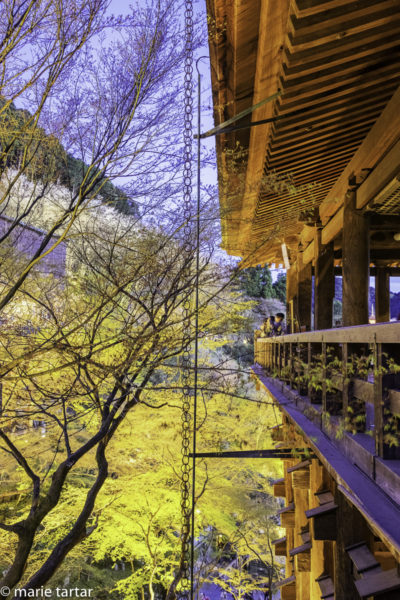

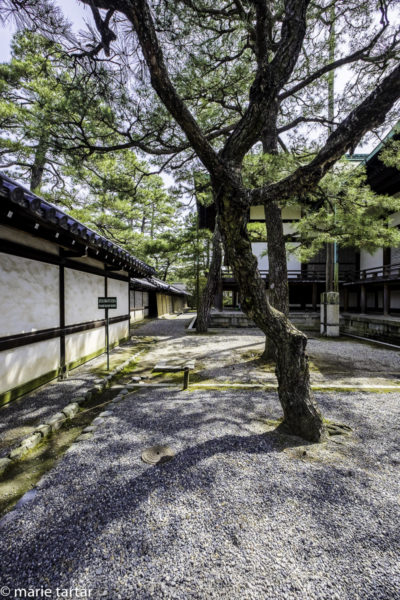
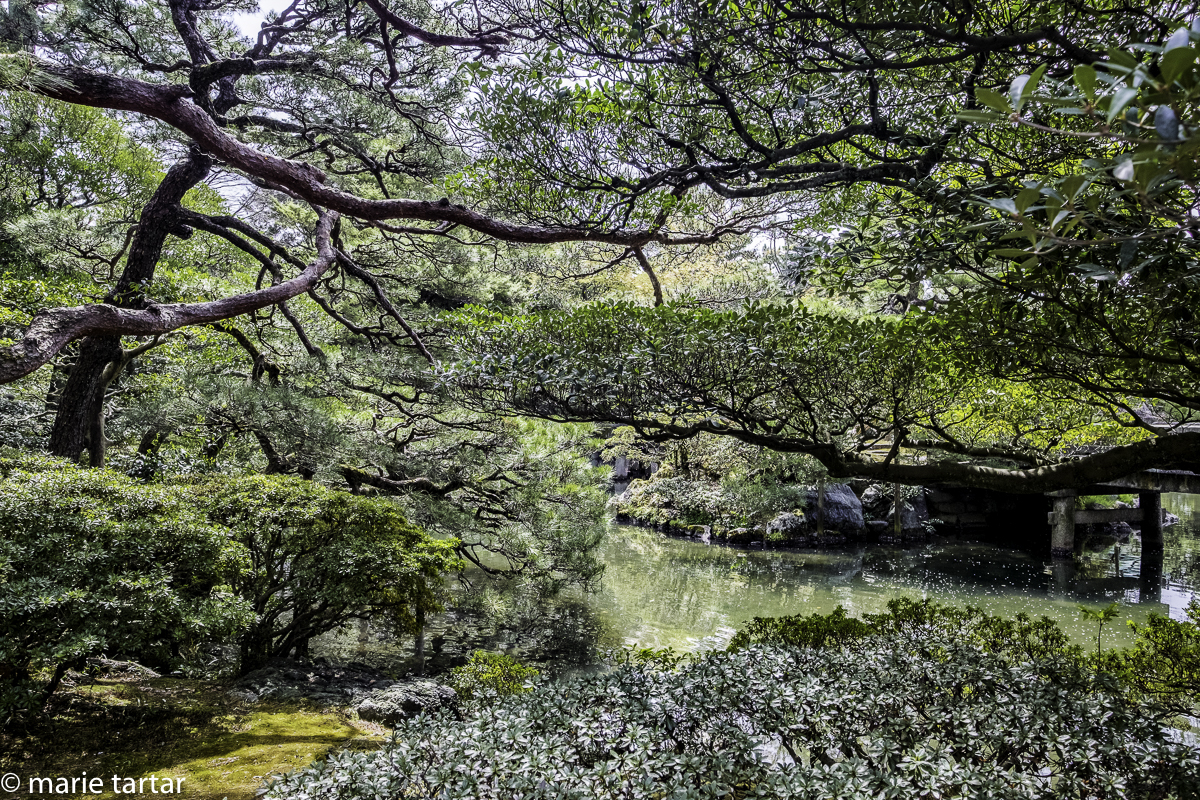
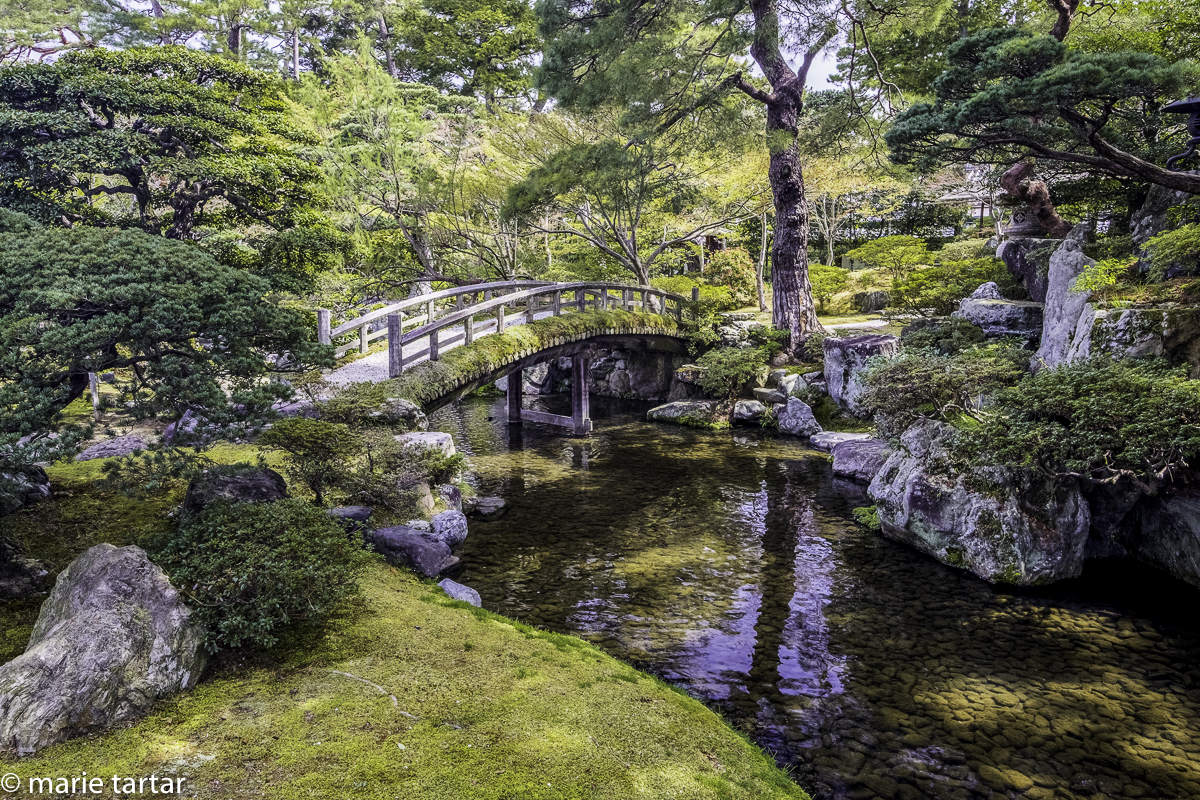

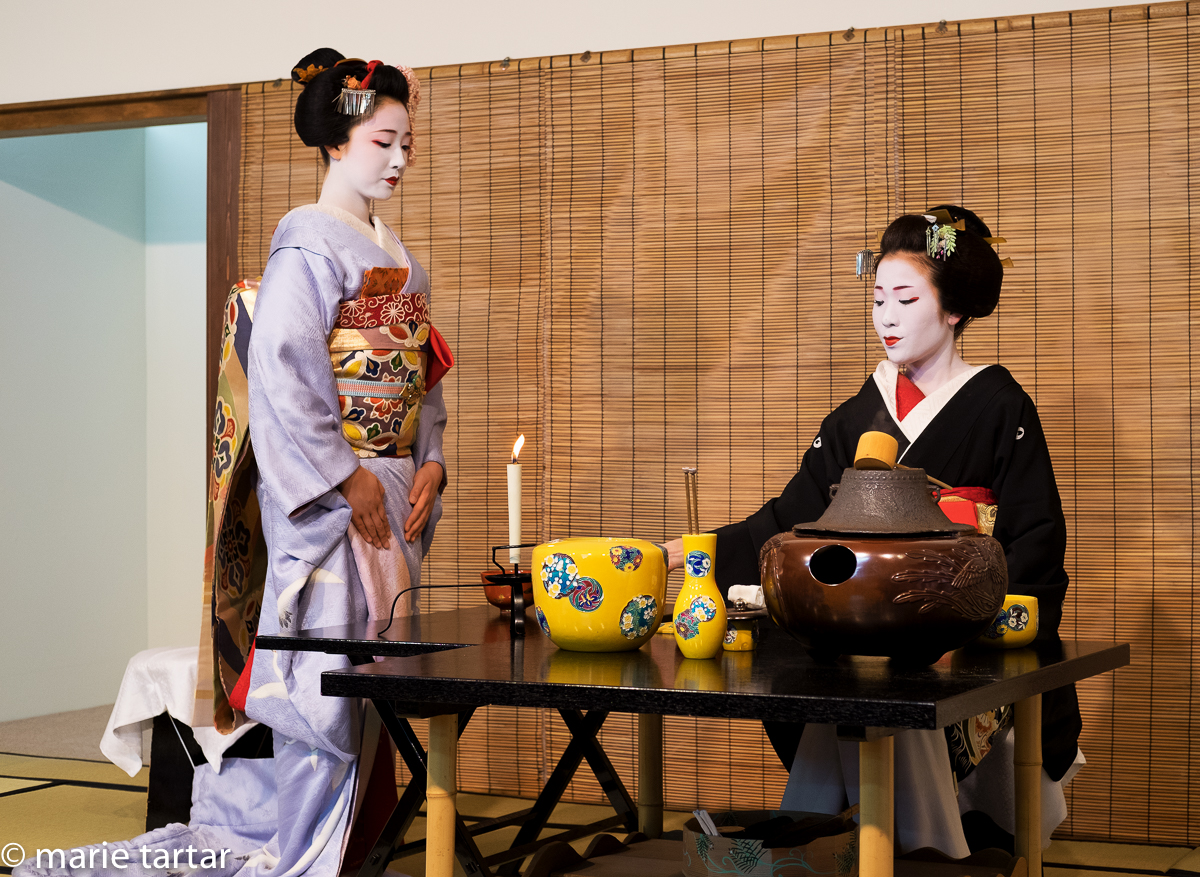
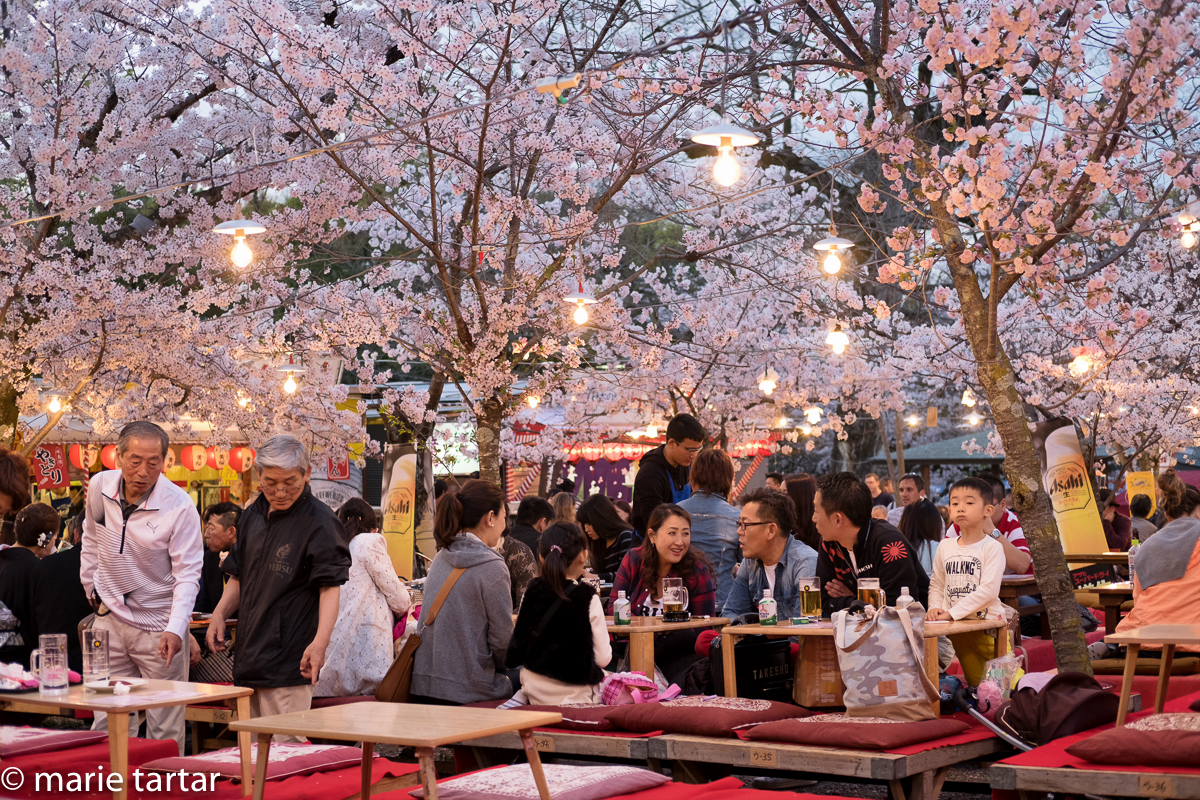

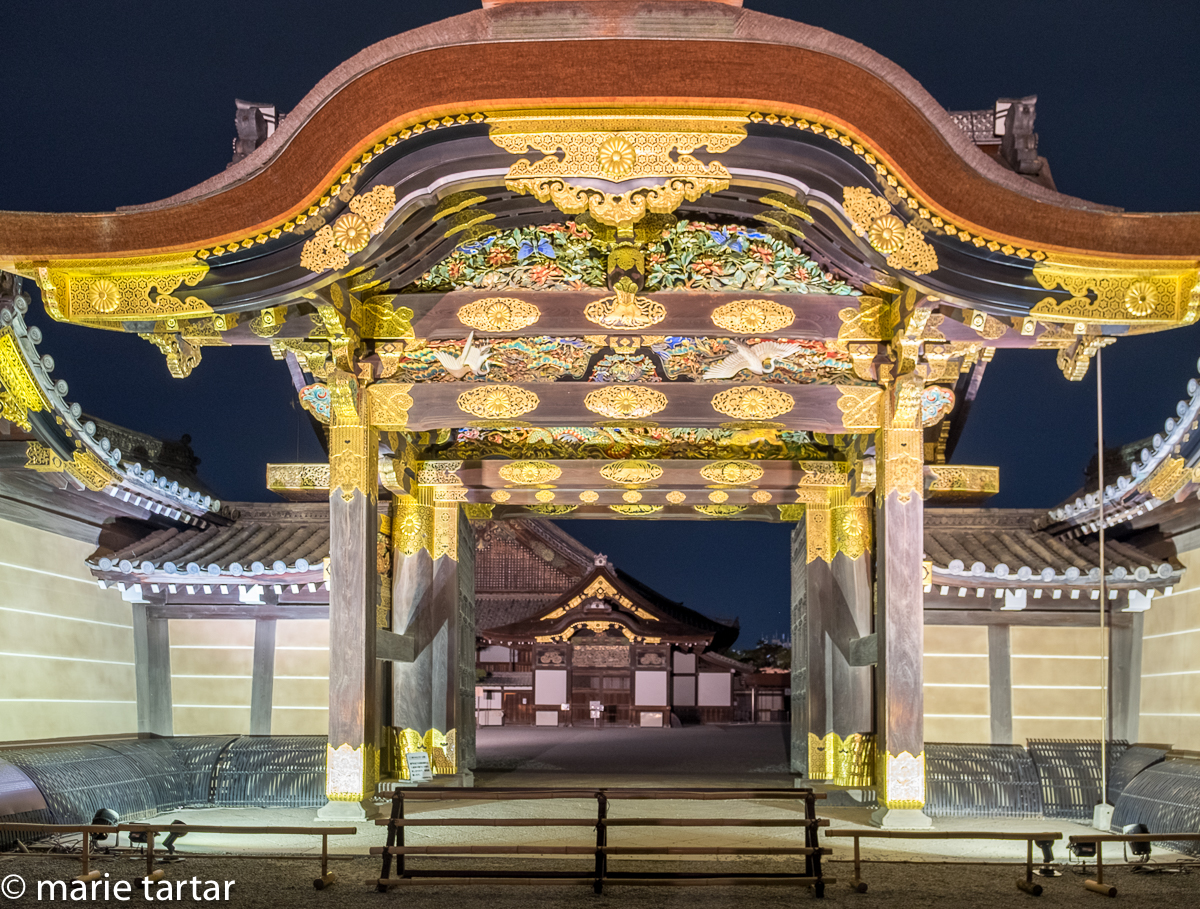

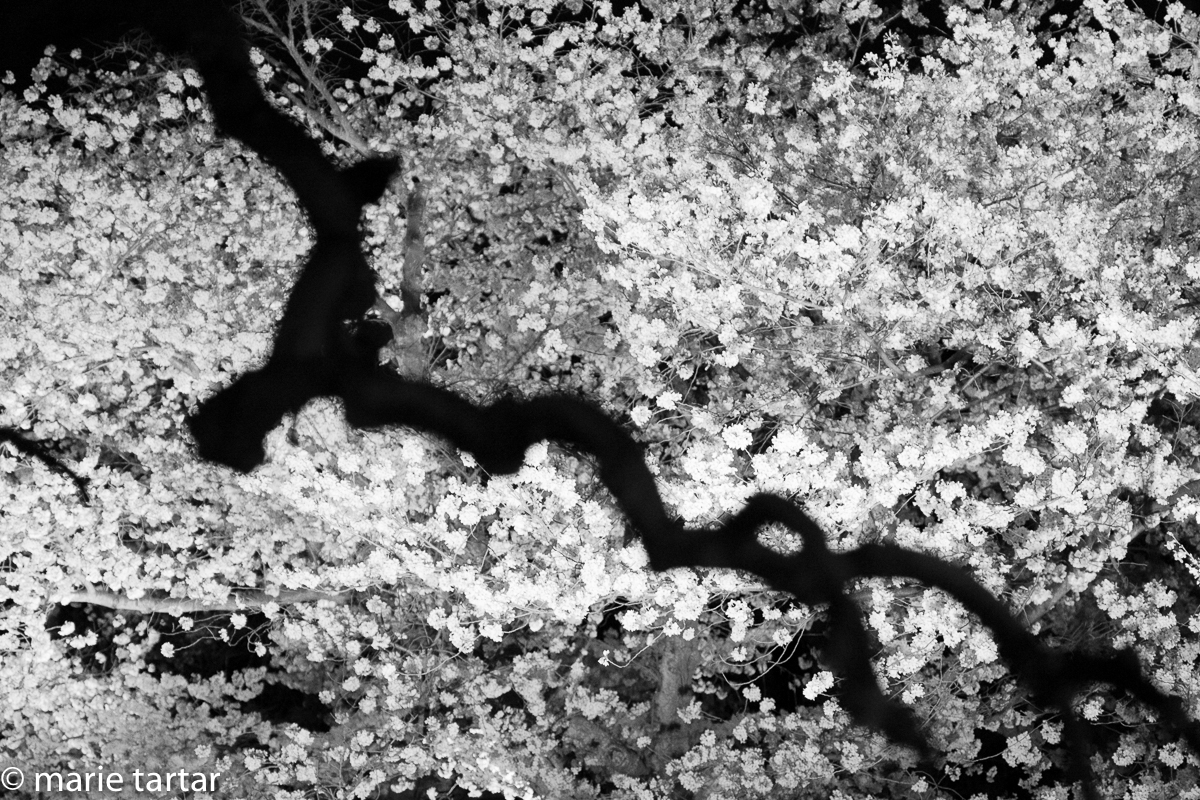
Gorgeous place made even more incredible by your photography! Thank you for sharing, Marie!
Thanks, Ugne-it was magical!
-Marie
I like the illuminated cherry blossoms, but I really love the palace gardens–all those wonderful horizontals. Or was that a feature of your photographs rather than of the gardens? Either way, quite wonderful.
More palace gardens coming up in Part 3, Susan! Stay tuned…
-Marie